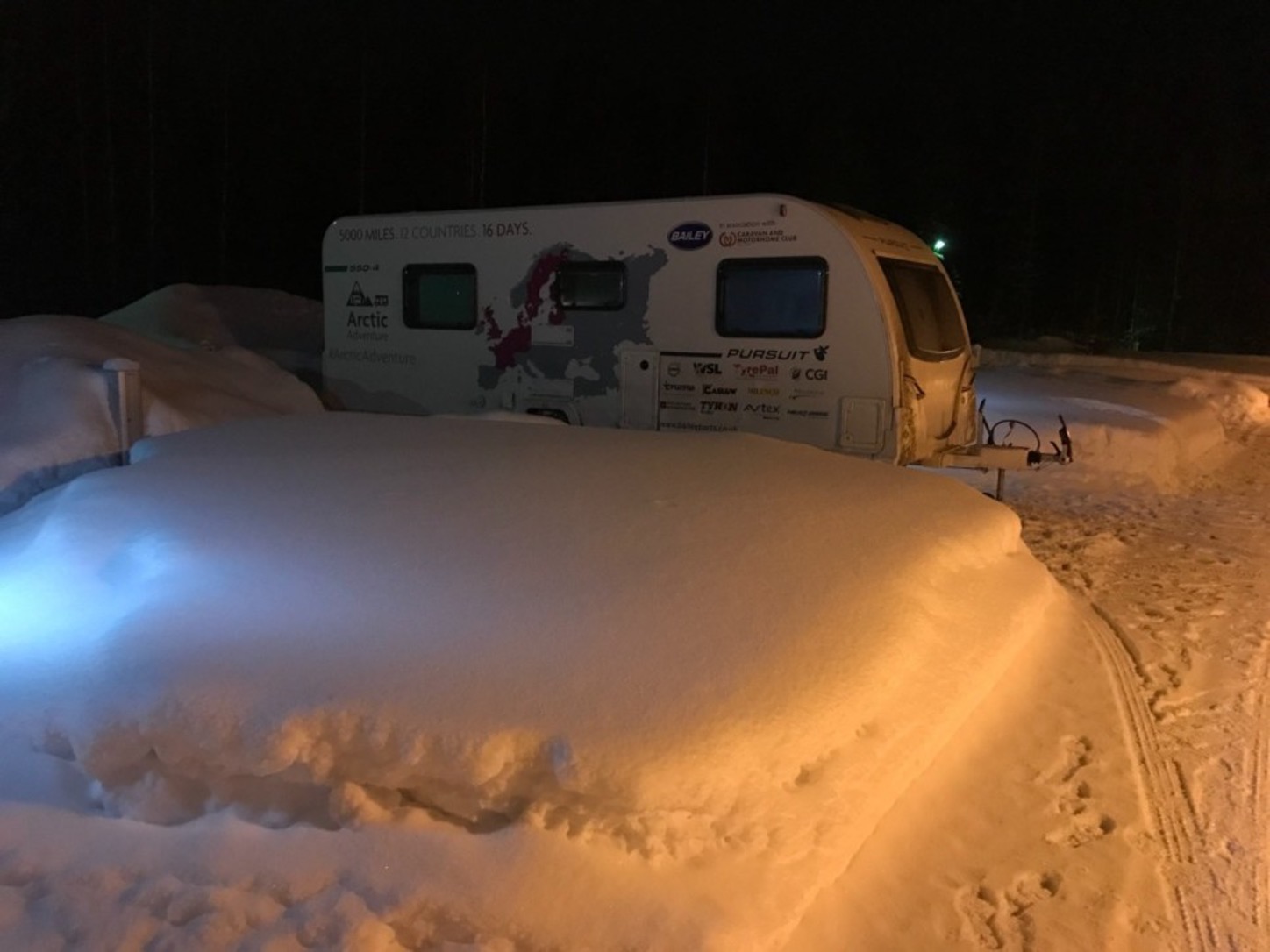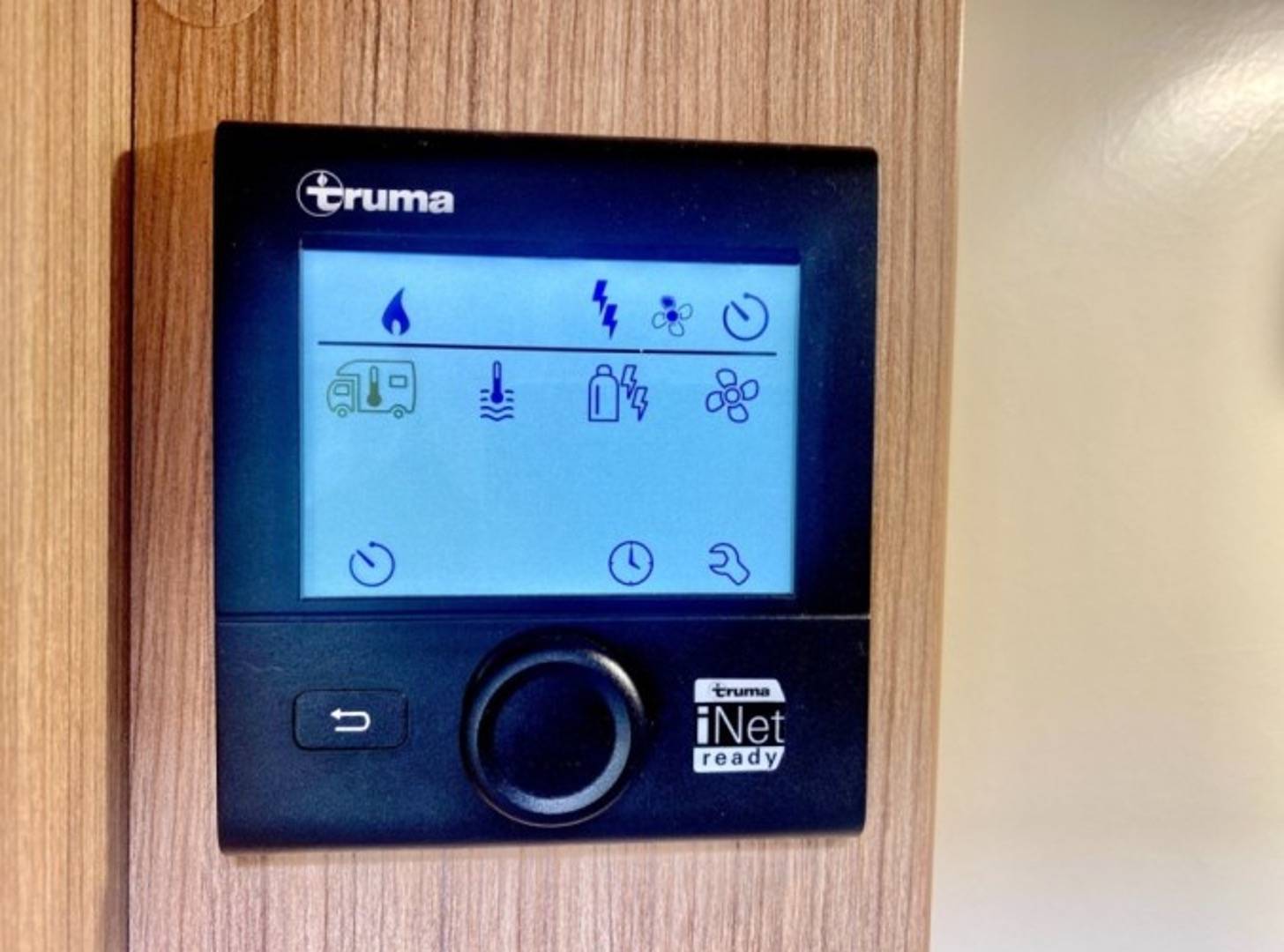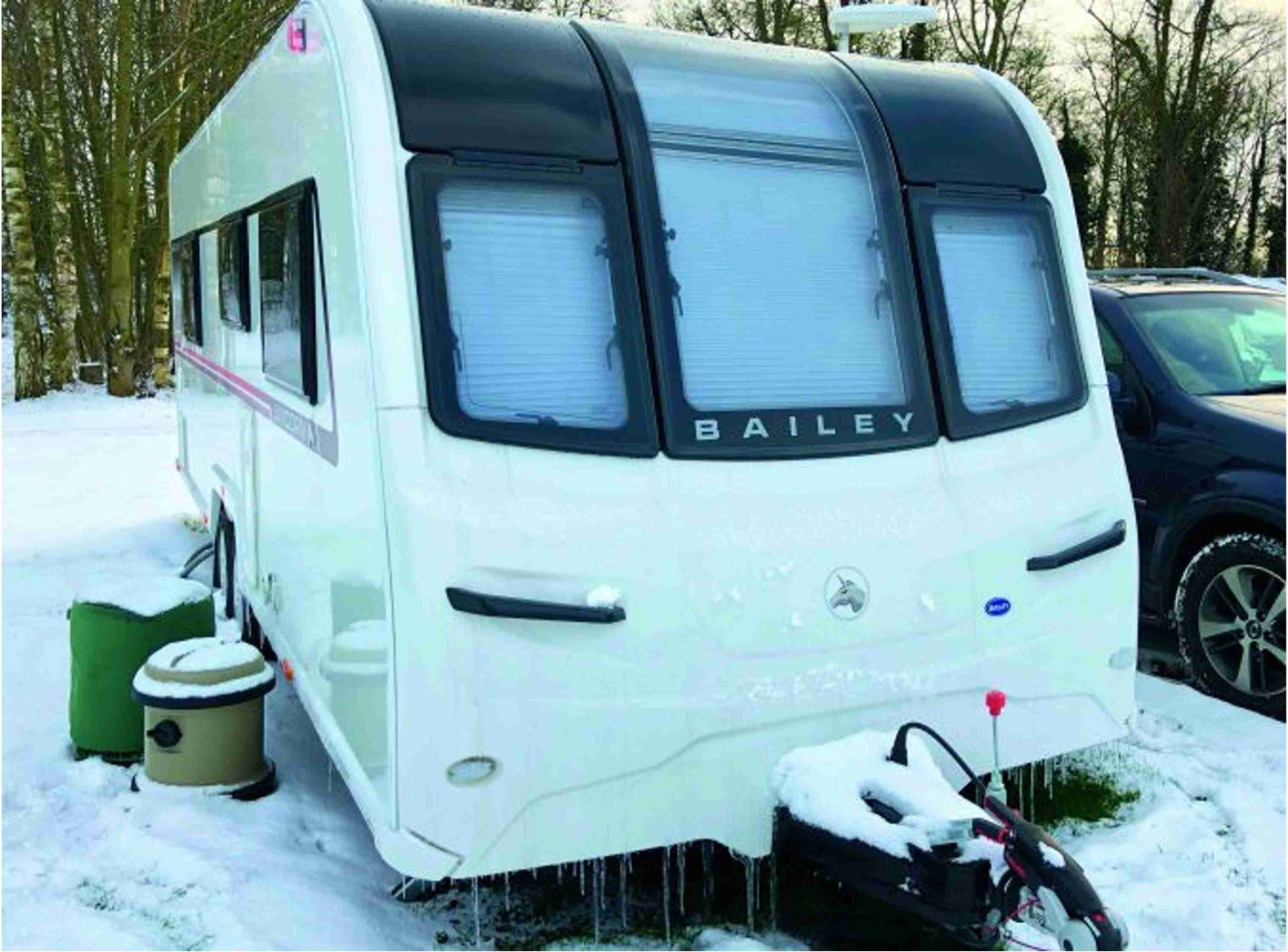Caravan heating systems: a quick guide to caravanning warmth
Caravan heating systems keep you warm regardless of when and where you tour, but what should you consider if you’re planning a winter trip or looking to buy a new caravan?
Page contents
Words and photos by Lee Davey
Caravan heating options

We’ll focus on the leading caravan heating systems from Alde, Truma, and Whale. In broad terms, Truma and Whale produce blown-air heating systems, while Alde caravan heating is a hydronic system that uses antifreeze fluid to warm a series of radiators.
All of the above systems can be powered by gas or mains electricity – or a combination of both – which makes it easy to enjoy pitches with or without an electric hook-up, whatever the weather.
Modern caravans shrug off sub-zero temperatures with ease thanks to a combination of efficient heating and insulation, with an increasing number of caravanners choosing to enjoy ski season or wintry destinations from the comfort of their leisure vehicle.
Caravan heating, 230V or otherwise, isn’t just for use during spring or autumn trips, as modern products are regularly tested to extremes by the various design teams.
Many years ago, the skeleton of a caravan was a timber framework with relatively thin insulating matting sandwiched between the aluminium outer skin and the inner wallboard.
Modern caravans, however, are a very different beast.
Using Bailey’s Alu-Tech system as an example, the fully laminated bodyshell has enhanced thermal properties, which help to retain as much heat as possible when the heating system is switched on, as well as maintaining the desired temperature once reached.
Further testing is conducted in a cold chamber, with a thermal camera checking for warm air ‘leaks’ around other areas such as windows and wheel boxes. The result is a thermally efficient leisure vehicle.

Caravans are incredibly self-sufficient, and their heating systems are designed to maintain comfort levels regardless of whether gas or electricity is used.
A mains hook-up is the most common power source, with elements within the heating system warming the air from antifreeze heating fluid – depending on the heating type installed – before passing the warmed air or liquid around the caravan.
A gas burner is also fitted, allowing the caravan heating to work from bottled gas.
Or should you wish to heat the caravan quickly, most heating systems will work on a combination of gas and mains electricity, switching to electric-only when the desired temperature is achieved.
If winter trips are planned, the gas type used is worth checking. Butane will struggle if temperatures fall towards freezing, whereas propane will continue to work until temperatures reach -40°C.
Calor is a popular choice among caravanners, with butane sold in 7kg blue bottles and propane in 6kg red bottles.
It’s worth noting that Alde, Truma and Whale also offer water heaters – either combined with the heating system or available as a separate unit to heat the water.
Heating and hot water are powered by whichever energy source you select, such as gas, electric, or a combination of both.
These hot water systems heat a water tank, which can be anywhere from 10 litres to 13 litres, providing hot water for the sink, basin, and shower.
Caravan heating systems are usually ‘fit and forget’ items, but should you have any questions, we hope the section below will resolve any queries:
FAQs

How do I keep my caravan warm at night?
Keeping warm at night is where your caravan central heating excels.
Most caravan heating systems are thermostatically controlled, allowing the occupants to set the desired temperature before bed, with 15°C being comfortable for most conditions.
Many heating systems from Alde, Truma and Whale have a timer function, which allows the heating to switch from a higher evening temperature to a comfortable sleeping temperature at a predetermined time.
Should you be caravanning in chilly conditions, this timer function will also enable you to heat the inside of the caravan before getting out of bed.
How to make a caravan awning warm in winter
To minimise draughts in your awning, ensure that it’s correctly pegged out with no gaps, and use an awning skirt and wheelarch cover to help eliminate wind entering the awning from underneath the caravan.
If you have a porch awning, or another awning type that doesn’t run the entire length of the awning rails, a snug fit against the body is essential.
Dedicated awning flooring will also help, with many being breathable to minimise damage to the grass. Interlocking foam tiles are popular for hardstanding pitches.
With the awning and floor sorted, popular awning heating units include fan and halogen heaters.
As the awning has been erected to minimise any draughts or fresh air, it’s unwise to use gas heaters in the awning due to the risk of carbon monoxide build-up.
Playing devil’s advocate, with many sites struggling due to stratospheric energy costs, avoiding secondary heating in the awning until normality resumes may be beneficial long-term.
How to heat a caravan without electricity
Most caravan heating systems can run on bottled gas, with any timing or ignition systems being powered from your 12V leisure battery.
This allows your caravan heating to function without a 230V electric hook-up. It’s wise to charge your leisure battery and check gas bottle levels before going on holiday.
Should I have Truma Combi caravan heating or Alde wet central heating?
Both heating systems are incredibly popular, and choosing between the two heating brands is down to personal preference.
The Truma Combi system heats air which is then passed through ducting pipes and caravan heating system vents by a blown-air caravan heating fan.
The Alde system is similar to domestic central heating, warming fluid before passing it through a network of pipes and radiators.
The Truma Combi often benefits from faster heat-up times, with the Alde system providing a quiet, even heat.
Premium caravans are often fitted with Alde wet central heating, although both heating types perform incredibly well in all conditions.
Will tubular heaters keep the caravan warm?
Usually found in small areas that need to be frost-free – like a greenhouse – these cylindrical electric heaters aren’t designed to heat areas to a comfortable temperature.
Also, when tested to see if they will keep a caravan frost-free, they fail to heat beyond the localised area, so it’s essential to follow the correct ‘drain down’ procedure before storing the caravan over winter.
Can heat hurt a caravan?
Many caravans are also tested at high temperatures. I’ve observed climate chamber tests at 40°C, where various components, laminates, and products are checked for heat compatibility, and I’ve caravanned in temperatures of 45°C without failure of any fixtures, fittings, or finishes.
How much is caravan central heating?
If you’re planning to retrofit a heating system, a blown air unit is worth looking at. Truma and Whale are popular with people looking to fit such a system, with costs varying depending on the caravan, fitting location, ducting runs, wiring, etc.
As a rough guide, a Whale caravan heating system can be purchased online for less than £1,000 (including ducting and controls), with a recent online deal offering a Truma Combi system for approximately £1,500. These costs do not include fitting.
Expert Caravan advice to your door!

Caravan magazine has been inspiring caravanners for more than 80 years! We have grown to become a leading authority on caravans, the caravan industry, caravan lifestyle, campsites and caravan travel destinations. We know what our readers want – and that's to make the most of their caravans and their holidays!
Want to know more about Caravan magazine?
About Caravan magazine







Recent Updates
Caravan showers: all you need to know
In this guide, we’ll discuss the different types of showers, how they work, and how to fit an external shower point to your caravan ...
Caravan towing: all you need to know
Towing a caravan may seem daunting initially, but a few simple tips can make the journey enjoyable and ...
All you need to know about towbars & towballs
Flange, detachable, swan neck, retractable – towbar technology choice is bewildering. Don’t worry. We’ll ...
Caravan WiFi: everything you need to know
Caravan holidays are the ultimate way of getting away from it all, although we sometimes need a link to the ...
Caravan insurance: all you need to know
Navigating the world of caravan insurance can feel like a daunting task. Fear not, as this comprehensive ...
Buying a caravan: what you need to know
Let us guide you through some of the complicated things to think about when first looking at buying a ...
Caravan awnings: a buyers' guide
Caravan awnings are a fantastic addition to any caravan as they are one of the simplest, quickest and most ...
Caravan electrics: avoid tripping out
All caravan owners have overloaded their mains supply at some time. Here’s how to master caravan electrics ...
Caravan damp: a complete guide
There's little more guaranteed to strike fear into the heart of a caravan owner than the word 'damp'. But if ...
Caravan jockey wheels: the definitive guide
A well-functioning caravan jockey wheel can make all the difference to manoeuvring away from the towcar, ...
Other Articles
Caravan cooking recipes
Caravan cookery inspirational ideas. No need to stress out in the kitchen with these quick and easy time-saving dishes ...
Caravan bike racks: a complete guide
Exploring the beautiful surroundings while on a caravan trip is undeniably one of the greatest joys of the ...
A guide to solar power in your caravan
Not that many years ago, mains electrical hook-up on campsites was considered a bit of a luxury, and, for ...
The ultimate guide to caravan layouts
Choosing the right layout or floorplan of your caravan is an all-important part of the buying process – find ...
A guide to seasonal caravan pitches
Our in-depth guide to finding and securing seasonal caravan pitches on your favourite campsite ...
Caravan weights and payloads: a quick guide
The terminology of caravan weight – MIRO, MTPLM, noseweight, kerbweight, payload, weight plate upgrade – is ...
The ultimate guide to caravan motor movers
Caravan motor movers: everything you need to know about remote control caravan manoeuvring ...
Caravan cleaning: All you need to know
Whether you’re taking the caravan out for the first time or it’s just in need of a spruce up, our guide will ...
18 essential items for camping with your dog
Camping is for the whole family – including our four-legged members. Here's what you'll need to keep your dog ...
14 welly boots for camping trips
It might be April but that won’t stop the rain in the UK, so a pair of comfortable welly boots is still ...